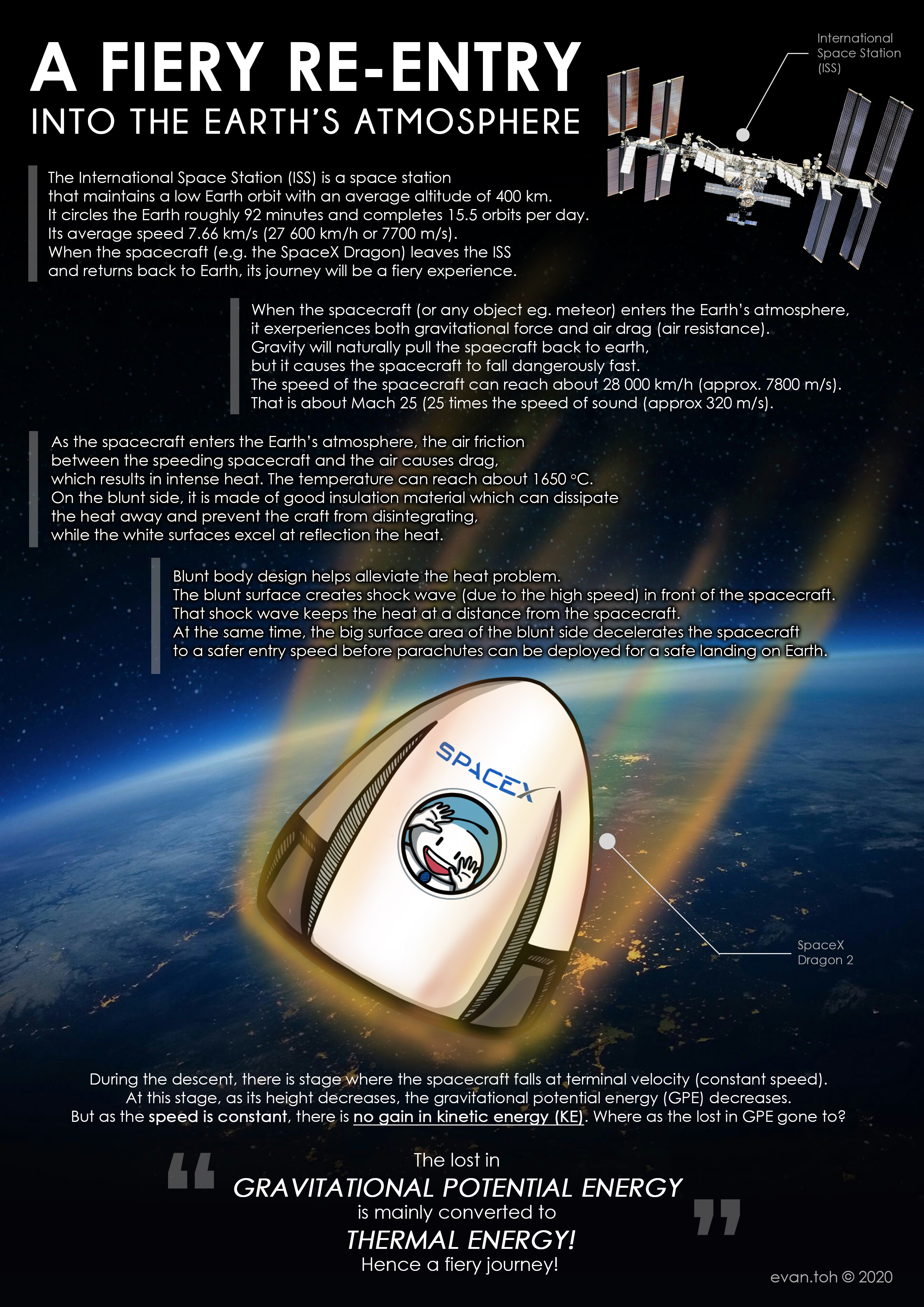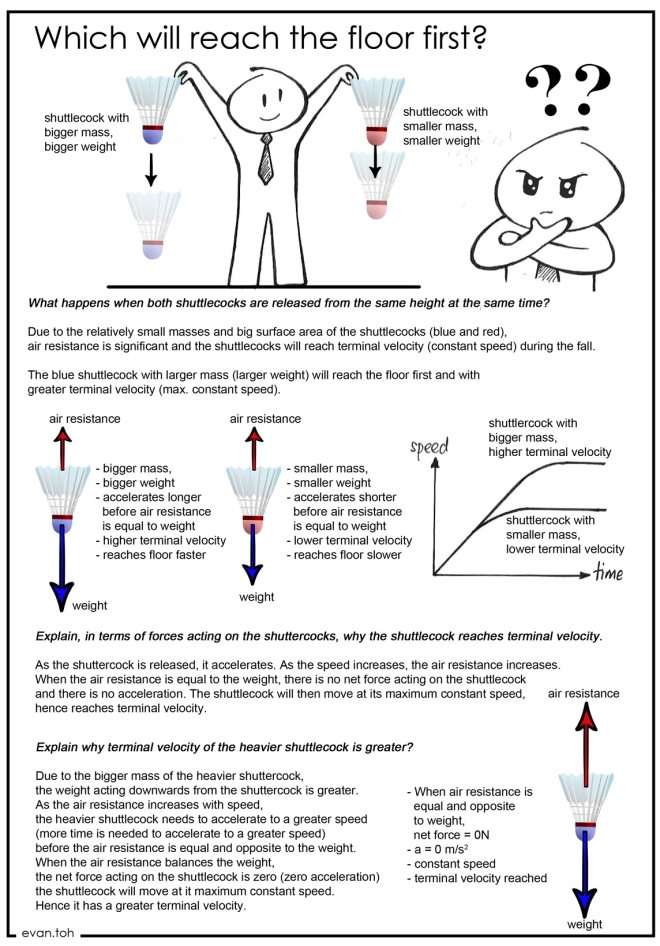Tag Archives: terminal velocity
Parachute Jump – Speed-time graph
In a typical parachute jump, there are various distinct stages/sections as you can see from the graph in the video below.
AB = constant acceleration, free fall, a = 10 ms-2
BC = decreasing acceleration
CD = constant speed, zero acceleration
at D = the time where the parachute is fully opened
DE = constant deceleration
EF = lower constant speed, zero acceleration
FG = constant deceleration
After you have learned Dynamics, you should be able to explain each stage using forces acting on the skydiver, namely the weight and air resistance.
Refer to the video below to understand the motion at various stages and how to explain in terms of forces, esp the part on why the acceleration is decreasing during BC.
You can refer to the detailed explanation in words in the comics below. Hope this post helps you to understand better!

Understanding Free-Fall (acceleration due to gravity)
On earth, the gravitational field strength is 10 N/kg and the acceleration due to gravity is 10 ms-2.
That means when you release an object from you hand, the object will fall with increasing speed. The acceleration is a constant 10 ms-2 (acceleration due to gravity). Simply put, it means in 1 second, the speed of the object will increase by 10 m/s.

In general, if there is no air resistance or air resistance is negligible, the speed-time graph is a straight line with constant gradient and passes through origin, i.e. speed is directly proportional to the time.
If there is air resistance, there is a maximum constant speed if the object continues to fall. Hence the graph is different.
More importantly, remember that any object that you released on earth, whether there is air resistance or no air resistance, the initial acceleration when it is released is always a constant 10 ms-2!
Refer to the video for the explanation and some examples.
Fiery Re-entry into Earth’s Atmosphere


SpaceX’s Crew Dragon heat shield shown off after first orbital-velocity reentry
How do spacecraft re-enter the Earth? | HowStuffWorks
Why Is It So Difficult For A Returning Spacecraft To Re-Enter Our Atmosphere?
Returning from Space: Re-entry – PDF format
SpaceX In-Flight Abort Test
SpaceX Falcon Heavy- Elon Musk’s Engineering Masterpiece
Shuttle Atlantis STS-132 – Amazing Shuttle Launch Experience
How to Land the Space Shuttle… from Space
Heavy and light shuttlecocks – which will reach the floor first when released?
Refer to this post on falling of basketball and bowling ball
Refer to this post on a video of falling feather and bowling ball
Basketball vs bowling ball – which will reach the floor first when dropped?
Refer to this post on terminal velocity of shuttlecocks
Refer to this post on a video of falling feather and bowling ball
PP N2010 P1 Q4 Two objects same size and shape but one is heavier. Motion when both released
Solutions: Option C
When a body is released from rest, the only force acting on the body is its weight due to gravity. Both bodies experience acceleration due to gravity. Hence for both bodies (regardless of mass), will have the same initial acceleration of 10 m/s2.
As the two bodies are of the same size and shape, they will experience the same air resistance for any particular speed. As speed increases, air resistance increases.
For terminal velocity to be reached, air resistance has to be equal to the weight. Since weight is greater for the ball with larger mass, the air resistance has to be bigger. Thus, the ball has to accelerate more (air resistance increases with speed) for the larger air resistance to be equal to the weight. Hence the ball with larger mass will have larger terminal velocity.
[NOTE]
Do not confuse ‘speed of the body is independent of the mass’ as learned in Work Done, Energy and Power. This concept is based on the assumption that there is no air resistance. So not applicable in this question as for terminal velocity to occur, air resistance must be present.




